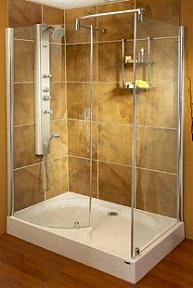Our Voltimum Experts answer your questions on a daily basis in our Technical Expertise area. This one, concerning a shower installation and its electrical isolation, is answered by SELECT:

Also, if this is the case, does the isolator require to be double-pole? This is assuming that the shower does have insulated elements, as oppose to un-insulated (BS 7671:2008 Regulation 554.3.3).
We are carrying out Periodic Inspection Reports (PIR) in various properties and have found that in some cases, the shower's only form of isolation, other than the functional switch on the shower itself, is the protective device.
We are looking to identify this as a Code 4 on the observations and recommendations page, but I don't want to identify something that may be incorrect.
I would appreciate if you can help with this and identify where, within BS7671:2008, or the Guidance Notes, we would find information to support this.
Answer: Regulation 537.2.1.1 requires that each circuit shall be capable of isolation from all live conductors (In TN-S and TN-C-S earthing systems the neutral does not require to be isolated).
The circuit breaker in the instance you describe would meet the requirement for isolation purposes (provided that it is to the BS EN 60898 standard). However, where the means of isolation is remote from the equipment provision, to secure this in the open position would be required (Regulation 537.2.1.5).
BS 7671:2008 also requires the installation designer to consider the requirements for 'switching off for mechanical maintenance purposes' - ie: non electrical maintenance, and it may be that a suitably located switch should be provided for this purpose (Regulation 537.3). Note that this may also provide a means of local isolation for electrical maintenance. The switch is not necessarily required to break the neutral conductor of the circuit.
Your proposal to identify this as a Code 4 item on a PIR may be valid and is in line with guidance provided in the Electrical Safety Council's BPG No 4.
To see many more Q & A in Voltimum UK's Experts Area, please click on the link:
www.voltimum.co.uk/consult.php?universe=consult.index.questions